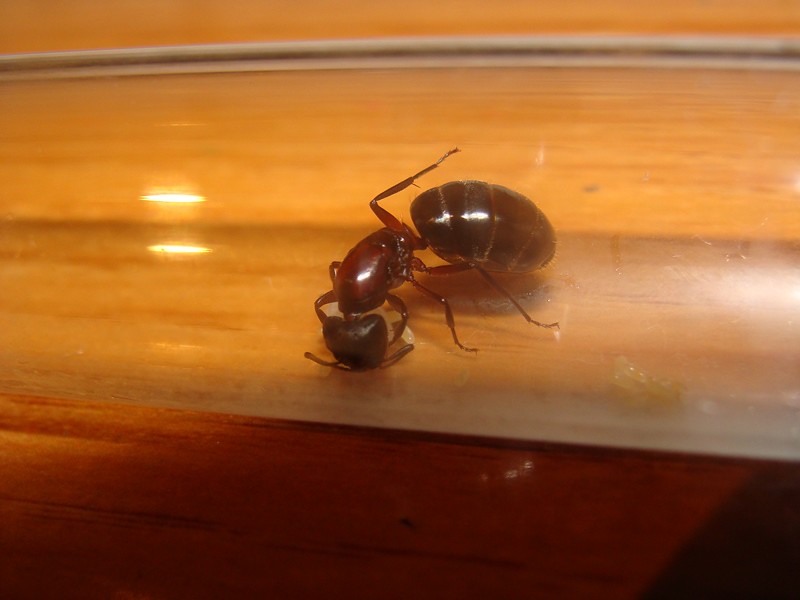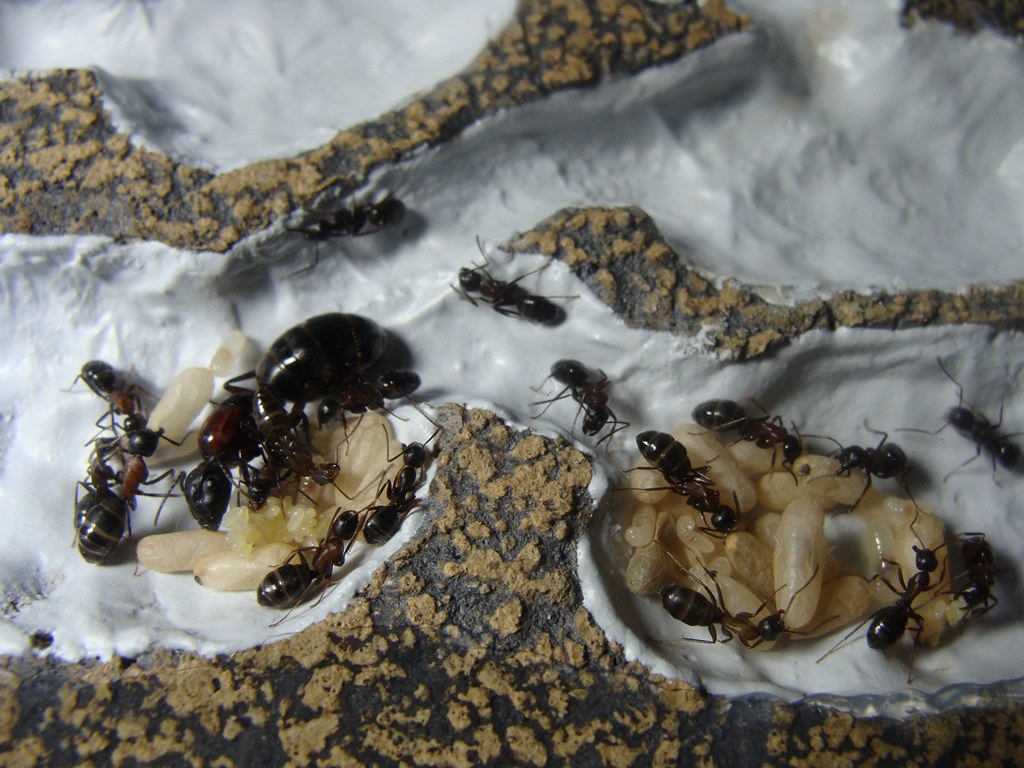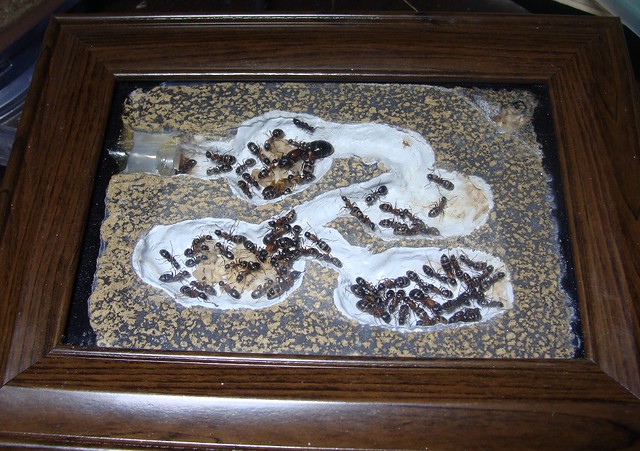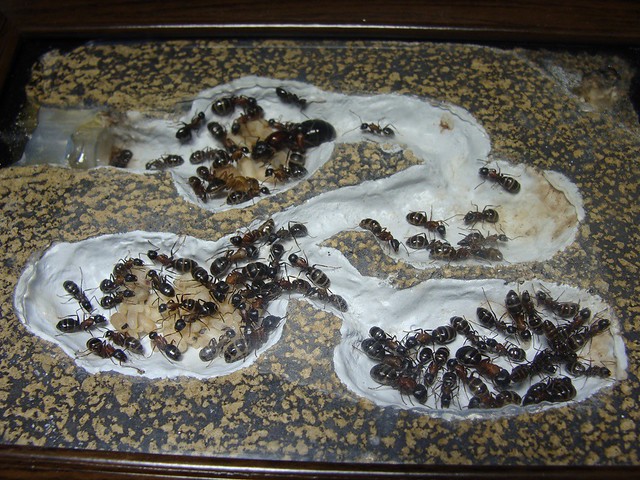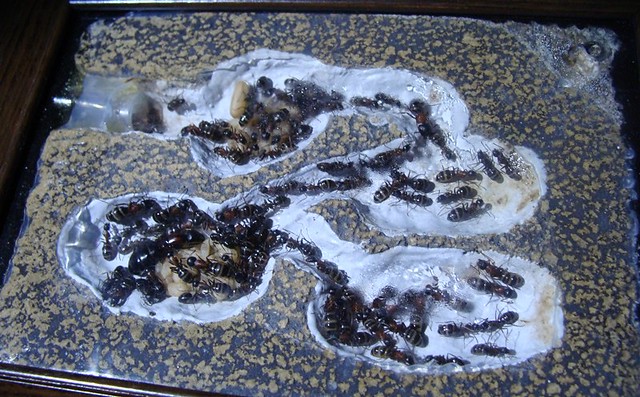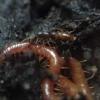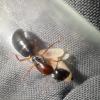A friend gave me a Camponotus noveboracensis queen on May 28. He had found her on May 17 and by the time I got her she already had 9 or 10 eggs.
Despite much searching, I had been unable to find this species (or any Camponotus species besides Camponotus herculeanus or Camponotus modoc).
Needless to say, I was thrilled.

While splitting some firewood in early June, I saw a Camponotus worker run off, leaving a small pile of brood behind. I collected one pupae and three medium sized larvae and gave them to her (I left the rest in case the worker came back).

2 workers eclosed by June 15. The other 2 eclosed by the end of June.
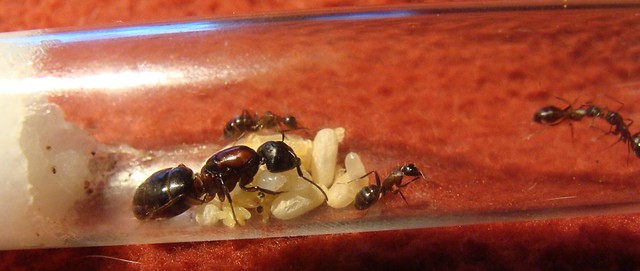
July 28, she has quite a pile of brood with pupae and various sizes of larvae.
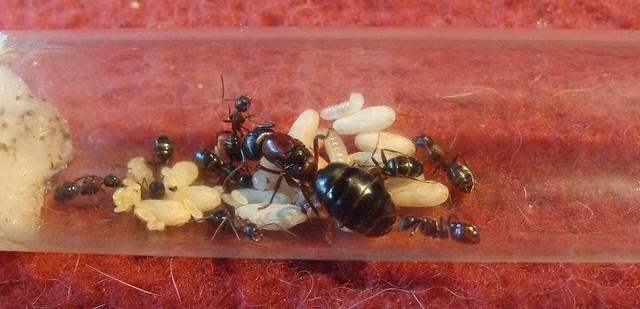
The test tube was getting a bit crowded so they got an actual formicarium. So easy to move, Camponotus simply go to the warmer nest.

Sept. 7 I counted 64 workers with a lot of pupae and larvae, and a few eggs. They really like cricket and spider.
Oct. 14 I counted 101 workers with some pupae and larger larvae.... None of my colonies grew this fast so I am just amazed. They are in the same type of nest, with the same water schedule, same food, and on the same heat cable.
I am kind of shocked that this colony doesn't seem ready to hibernate yet despite freezing temperatures outside. Once the last pupae has eclosed they will get a nice nap.
Nov. 1 This colony has slowed down and is ready for hibernation, I am just waiting for the last 4 pupae to eclose and then they will go into hibernation with at least 125 workers.
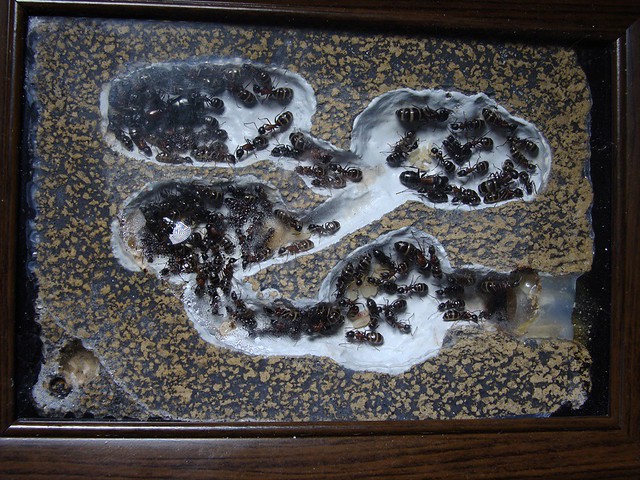
Update: The last pupae eclosed on Nov. 10, and they were put into hibernation on Nov. 13.
Edited by Crystals, December 28 2017 - 8:29 AM.
